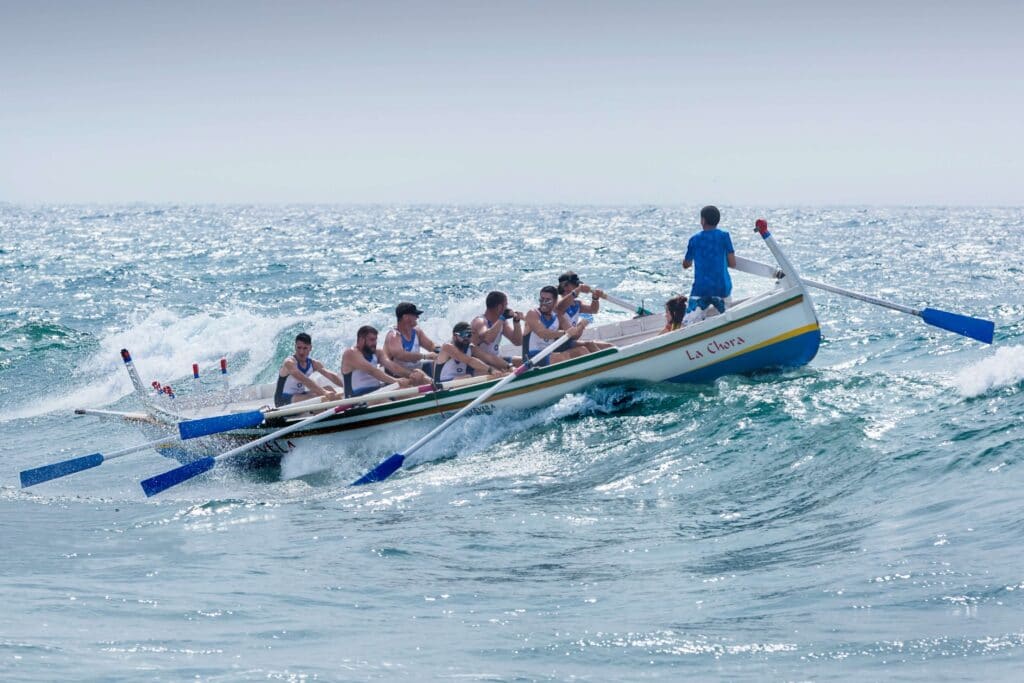“No matter how brilliant your mind or strategy, if you’re playing a solo game, you’ll always lose out to a team.” – said Reid Hoffman
A team is a group of individuals with complementary skills committed to a common purpose for which they hold themselves mutually responsible. I would say: The main ingredient to build team is trust. Teamwork builds trust and trust builds speed.
When you need a team? You’ll probably need a Team if you need synergy – if you need the sum of the parts to be greater than the whole. If the desirable outcomes are complex, challenging and beyond the scope of individuals, then you need a Team.
So, what is the difference between a group and a team? Aren’t they the same thing? Well, no, they aren’t. A group is a collection of people whereas a team is that same collection of people who are working together on a common goal.

Here’s a common illustration of the difference: A group of people walk into an elevator. They all have different goals and agendas for being on the elevator. The group becomes a team when the elevator breaks down. Now they all have the same goal: Get out of the elevator!
A group is formed, and a team is a build. There are some other differences you will find them in pdf file attached to this lecture.
|
GROUP |
TEAM |
|
|
Development |
Formed |
Build |
|
Definition |
A group is a collection of individuals who coordinate their individual efforts. |
Team is a group of people who share a common team purpose and a number of challenging goals. |
|
Leaders role |
Strong, clearly focus leader controls the group. |
Leader acts as a facilitator. |
|
Leadership |
Only one leader in a group. |
Shared leadership roles in a team. |
|
Purpose, goals and approach to work |
Purpose, goals and approach to work is shaped by a leader. |
Purpose, goals and approach to work is shaped by team leader in collaboration with team members. |
|
Success |
Group members produce individual outputs. There is Individual success. |
Team produce collective outputs. Success of the one team member is Team success. |
|
Accomplish goals. |
Group members Accomplish individual goals. |
Team members Accomplish team goals. |
|
Members |
The group members are independent. |
The team members are interdependent |
|
Process |
The process of a group is to discuss the problem, then decide and finally delegate the tasks to individual members. Discuss, Decide and Delegate |
A team discusses the problem, then decide the way of solving it and finally do it collectively. Discuss, Decide and Do |
If you want to maximize your team’s effectiveness, the first thing you need to know is the stages that the team goes through. Typically, the team goes through five stages of development. Psychologist Bruce Tuckman research and publish a theory of Group Development Model with 5 stages: forming, norming, storming, performing and Adjourning. Tuckman stages describe the process that teams go through and how members connect and form bonds to work effectively. Each stage presents its own unique challenge to effective leadership and management. By adjusting your leadership style and taking specific action based on which stage your team is at, you will be able to support the effectiveness of the team.
Now, the team stages. So, the first step is FORMING. In this first stage, team members are on their best behavior trying to fit in and getting to know each other. Their motivation comes from within. An experience gained both positive and negative from previous teams they’ve been involved with will have an impact on their behavior. Some team members will be excited about the challenge ahead and others may be nervous or anxious. The leader’s role is important in directing the work effort as roles and responsibilities may not yet be clear. It is in this stage that the creating of a team charter is a very useful tool.
THE SECOND STAGE IS STORMING. Team members will be testing the boundaries of the team and each other. At this stage team members may be focusing more on their own specific task at the expense of others and the team itself. Members may question the input of others and voice opinions about individuals or the group. This may manifest itself in personality clashes or even questioning the scope or mission of the team itself. These disagreements and conflicts must be resolved before the team moves out of this stage. It is at this stage that many teams may fail. If the members can’t find a way to work productively together and resolve differences and issues, then they won’t be effective. It requires a different leadership style to ensure conflict is resolved in a positive way. As the leader, you must keep the team motivated, help the team to address any issues as they arise and regularly clarify the purpose and goals.
THE THIRD STAGE IS NORMING. As trust and respect grows between team members, the team will gradually move into the norming stage. Members will start to be able to resolve differences and appreciate the skills and knowledge of other team members. When faced with difficulties or issues, individuals will tend to ask other team members for help and guidance. At this stage, the focus is on the shared goal and members have the ambition and responsibility to achieve a positive outcome for the team. Team members will be more accepting of the differences between each other and look for ways that these differences can positively enhance the effectiveness of the team rather than seeing them as an irritant. Once again, the leadership style should vary from the preceding stages to ensure team effectiveness. Even though the team may be performing well, it may not be the most effective level. For example, it is not unusual for team members to be so focus on preventing conflict that they in fact are reluctant to contribute challenging ideas and concepts. Good leadership will ensure robust discussion continues to add value to the team.

And the FOURTH STAGE PERFORMING. In this stage, teams operate with little friction and there are high level of trust, respect and motivation. Team members are comfortable in knowing that their own role and that of the others will allow team success. The team is often self-directing without the need for direct supervision. This is when team effectiveness is maximized. The role of the leader is now very much that of a facilitator aiding the team to communicate effectively and assisting if the team reverts to a prior stage.
And the FIFTH STAGE ADJOURNING. If the team is temporary, it will eventually reach the intended purpose and will need to be disbanded through organizational policies. Sometimes, permanent team will be finished if there is a significant change through an organizational restructure for example. The leader has an important role to play here. Some team members may find this stage difficult if they have formed strong bonds or if their future looks uncertain.
It is important to remember that each of these stages are a spectrum and teams may exhibit aspects of multiple stages as they develop and transition. It is the role of the leader and manager to identify what stage the team is at and use their leadership style along with specific tools and techniques to maximize the team effectiveness.
- Strong connections and bonds = team effectiveness
-
- Leadership styles vary according to the stage of team development
- Identify which stage your team is in
- Stage one – Forming Getting to know each other and fit together Previous experience will inform their behavior to each other. At this stage the leader must direct the work effort
Scope
The scope defines what work needs to be done, what’s included and not included
Team purpose and objectives
Team purpose: why has it been formed? How will you measure success?
Roles
Who is going to do what? You need have clearly defined job roles or position descriptions. They should include function and responsibilities of the individual, and the key performance indicators, or some other measure of success.
Resource requirements
Here you should include all physical and human resources required to get the job done. This may include any training or development opportunities.
- Stage Two – Storming Members are testing the boundaries of the team and each other. Members may be focused on themselves, rather than the team. Disagreement and conflict must be resolved before next stage. Good leaders will motivate the team, address issues as theay arise, and keep the focus on the goals.
- Stage Three – Norming Team members trust and respect each other. Team members focus on the positive in others, not the negative. The leadership style may be more democratic in this stage.
- Stage Four – Performing High level of trust, respect and motivation. All team members contribute to success. The team may be self-directing with the leader assisting the team.
- Stage Five – Adjourning teams may be disbanded when the project is completed. Permanent teams may disband if the organization is restructured.
- The stages are part of a spectrum. Teams will swap between stages over time.
Leaders task is to build cohesive teams through mutual trust. He
- Develops others—builds effective teams.
- Builds trust—sets personal example; sustains a climate of trust.
- Demonstrates the values and decisions consistent with the organizational ethic.
- Leads others—balances subordinate needs with vision and mission requirements.
- Builds consensus and resolves conflict.
- Creates a positive environment—fosters teamwork.
There are three main Qualities to help you measure good teamwork: IDENTITY, COHESION and CLIMATE.
High Identity teams develop through a shared understanding of what the team exists to do and what the team values. Team members understand and share mutual vision.
Teams with Cohesion have developed unity or togetherness across team members. Comes from mutual trust, cooperation, and confidence.
Effective teams have built good climate. They operate in a positive, engaging, and emotionally safe environment. Engaging environment drives team members desire to work together on shared missions; they feel a sense of self-worth and they are accomplishing something more important than they are.
If you accomplish IDENTITY, COHESION and CLIMATE in your team, we congratulate you for a good teamwork.
Team building is a continuous process. We invite You to experience them during joyful leadership training.
Join our free Joyful Leadership online course today! Start here.
SOURCES:
- Sabina Morosini, Joyful Leadership Manual
- Tuckman, B. W. (1965). Developmental sequence in small groups. Psychological Bulletin. 63(6), 384–399.
- Stroud, S. M. (2006). The effects of team building activities on group climate and cohesion. Retrieved from
